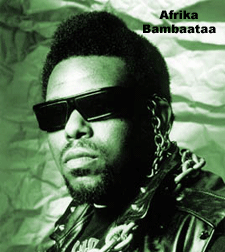As we look back on the life and times of Tupac Amaru Shakur we decided to dig in the crates and pull out an old interview we did with Shock G of Digital Underground. Here Shock G says his proudest moment was hearing 2 Pac talk about how his fondest years were spent being a part of the DU camp.
In this interview Shock G talks about the importance of 2Pac in Hip Hop culture and why he and his band mates would drop everything to accommodate 2Pac’s needs.
“There’s a time for comedy and being funny and there’s a time to be serious. When it came to 2Pac his message was too important to play around” , Shock G noted “He got the best we had”.
In this interview Shock G loans some keen insight into who 2Pac really was and how they complimented each other. It’s a fitting tribute for someone who meant so much for so many.
R pt1
Shock G of Digital Underground speaks about the first time him and 2Pac met up. He explains why Pac became a member of the group and who was the person most responsible for putting him on..
Shock G talks about the influence Digital Underground had on 2Pac and the influence Pac had on DU. In particular they focus on the way both had multiple personas i.e. Humpty Hump & Makavelli that they build their albums around.
Here Shock G goes in and talks about the influence of the Black Panthers. What many people don’t realize is that DU started out being a militant, Public Enemy type group that was an off shoot of the Black Panthers. The only reason, why they didn’t continue in that vein was because Public Enemy hit the scene first. Shock talks about the ways the Black Panthers shaped 2Pac as both a freedom fighter and a rapper.
We conclude our interview with Shock G talking about why Digital Underground saved their best tracks and hardest efforts for 2Pac. Shock said Pac’s message was too serious to be playing around and so whenever he needed top shelf material he got it.. We talked about 2Pac and political prisoners and what he would be doing to help out his ‘aunt’ exiled political prisoner Assataa Shakur. Shock also goes in and explains what it means to be a revolutionary.







 Much of it centered around artists like George Clinton, Bootsy Collins George Duke and Roger & Zapp to name a few. Simply put, brothers out west brought p-funk to the hip hop round table.
Much of it centered around artists like George Clinton, Bootsy Collins George Duke and Roger & Zapp to name a few. Simply put, brothers out west brought p-funk to the hip hop round table.



 Shock G pointed that funk was heavy all around the country except New York where he spent a lot of time growing up. He went on to explain that there were two things going on in New York City..”First of all, disco had taken off in a big way and hip hop was starting to become big among the younger people. The result of this activity was that New York missed out on the P-funk”.
Shock G pointed that funk was heavy all around the country except New York where he spent a lot of time growing up. He went on to explain that there were two things going on in New York City..”First of all, disco had taken off in a big way and hip hop was starting to become big among the younger people. The result of this activity was that New York missed out on the P-funk”. OGs of the Bay Area hip hop scene will recall that C-Funk an East Palo Alto native started out with the name Captain Crunch, but a certain cereal company came forth with some court orders forcing him to change. However, C-Funk along with his partner Mozilla the Funk Dragon have definitely made some noise around town.
OGs of the Bay Area hip hop scene will recall that C-Funk an East Palo Alto native started out with the name Captain Crunch, but a certain cereal company came forth with some court orders forcing him to change. However, C-Funk along with his partner Mozilla the Funk Dragon have definitely made some noise around town. the Black Panther of hip hop, CEO of Scarface Records and producers for the hit group Conscious Daughters , is himself no stranger to the funk. On his last album… ‘
the Black Panther of hip hop, CEO of Scarface Records and producers for the hit group Conscious Daughters , is himself no stranger to the funk. On his last album… ‘

 En Vogue producers Foster & McElroy, George Clinton collaborator and long time funkateer Dave Kaos and SF rap start JT The Bigga Figga. All have come to the hip hop roundtable with funk in their back pocket.
En Vogue producers Foster & McElroy, George Clinton collaborator and long time funkateer Dave Kaos and SF rap start JT The Bigga Figga. All have come to the hip hop roundtable with funk in their back pocket.








